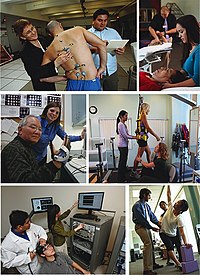
Photo from wikipedia
Background and aims The mortality rate of stroke has been increasing worldwide. Poststroke somatic dysfunctions are common. Motor function rehabilitation of patients with such somatic dysfunctions enhances the quality of… Click to show full abstract
Background and aims The mortality rate of stroke has been increasing worldwide. Poststroke somatic dysfunctions are common. Motor function rehabilitation of patients with such somatic dysfunctions enhances the quality of life and has long been the primary practice to achieve functional recovery. In this regard, we aimed to delineate the new trends and frontiers in stroke motor function rehabilitation literature published from 2004 to 2022 using a bibliometric software. Methods All documents related to stroke rehabilitation and published from 2004 to 2022 were retrieved from the Web of Science Core Collection. Publication output, research categories, countries/institutions, authors/cocited authors, journals/cocited journals, cocited references, and keywords were assessed using VOSviewer v.1.6.15.0 and CiteSpace version 5.8. The cocitation map was plotted according to the analysis results to intuitively observe the research hotspots. Results Overall, 3,302 articles were retrieved from 78 countries or regions and 564 institutions. Over time, the publication outputs increased annually. In terms of national contribution, the United States published the most papers, followed by China, Japan, South Korea, and Canada. Yeungnam University had the most articles among all institutions, followed by Emory University, Fudan University, and National Taiwan University. Jang Sung Ho and Wolf S.L. were the most productive (56 published articles) and influential (cited 1,121 times) authors, respectively. “Effect of constraint-induced movement therapy on upper extremity function 3–9 months after stroke: the Extremity Constraint Induced Therapy Evaluation randomized clinical trial” was the most frequently cited reference. Analysis of keywords showed that upper limbs, Fugl–Meyer assessment, electromyography, virtual reality, telerehabilitation, exoskeleton, and brain–computer interface were the research development trends and focus areas for this topic. Conclusion Publications regarding motor function rehabilitation following stroke are likely to continuously increase. Research on virtual reality, telemedicine, electroacupuncture, the brain–computer interface, and rehabilitation robots has attracted increasing attention, with these topics becoming the hotspots of present research and the trends of future research.
Journal Title: Frontiers in Aging Neuroscience
Year Published: 2022
Link to full text (if available)
Share on Social Media: Sign Up to like & get
recommendations!